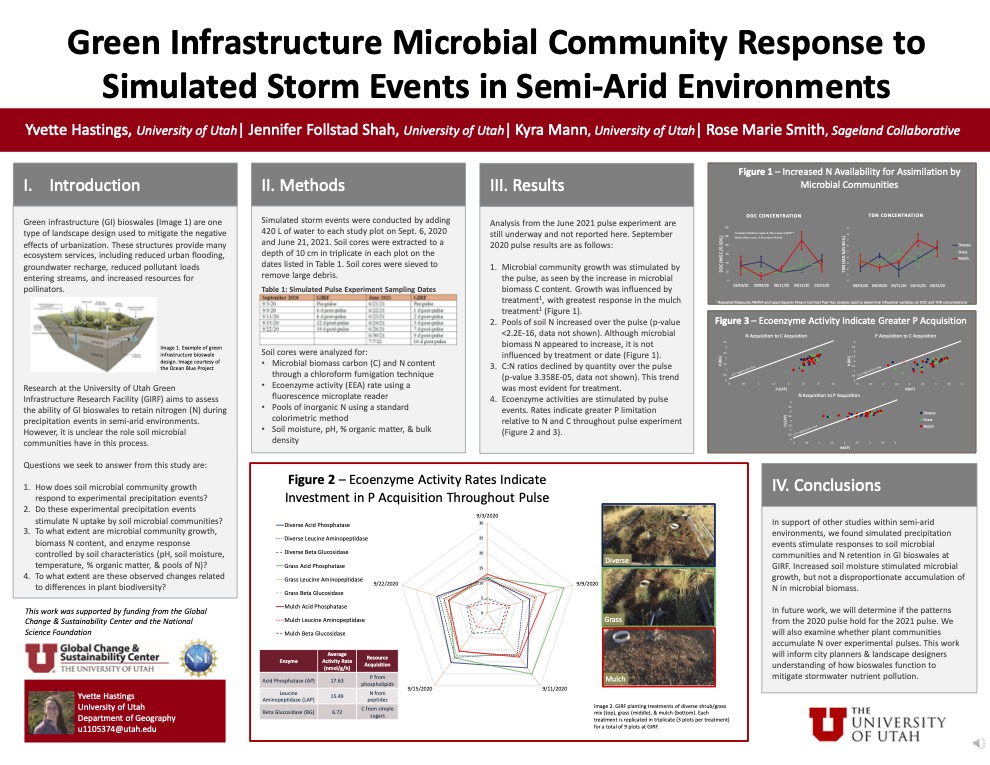Green Infrastructure Microbial Community Response to Simulated Storm Events in Semi-Arid Environments
–Yvette Hastings, Rose Smith, Kyra Mann, Jennifer Follstad Shah
[bs_collapse id=”collapse_bb86-afd7″]
[bs_citem title=”Bio” id=”citem_e610-6c22″ parent=”collapse_bb86-afd7″]
I am a MS candidate in the Department of Geography at the University of Utah working with Dr. Jennifer Follstad Shah. My thesis work looks at the role of soil microbial communities and enzyme activity response in green infrastructure bioswales during pulse precipitation events. I have an undergraduate degree in General Science from North Central College, Naperville, IL, and an undergraduate degree in Environmental and Sustainability Studies with a GIS certificate from the University of Utah, Salt Lake City, UT. After my first undergraduate degree, I worked as a chemist for about 8 ½ years in combination at an environmental analytical lab and a nutraceutical analytical lab in Salt Lake City, UT. After graduation, my professional goals are to work in water conservation and restoration in the Western U.S to repair riparian systems, improve stream functions, and reduce stream pollutant loads.
[/bs_citem]
[bs_citem title=”Abstract” id=”citem_eca8-96a7″ parent=”collapse_bb86-afd7″]
Many green infrastructure projects in semi-arid to arid regions have neglected to monitor nitrogen retention from stormwater inputs. Research at the University of Utah’s Green Infrastructure Research Facility seeks to quantify nitrogen retention in vegetated bioswales, as modulated by microbial communities. Our study consists of 9 plots with 3 replicated vegetation treatments that allow us to test the role of plant diversity on microbial community properties that control nitrogen cycling. Soil samples were analyzed for microbial biomass carbon and nitrogen content, and activity rates for 3 ecoenzymes associated with the acquisition of carbon, nitrogen, and phosphorus resources. Stormwater pulses stimulated microbial community growth and nitrogen uptake but varied amongst plant treatments. Ecoenzyme stoichiometric analysis shows greater phosphorous and nitrogen acquisition investment relative to carbon. We infer short-term nitrogen retention is initially constrained by water availability, limited by phosphorous supply during storm events, with strongest responses seen in diverse plant treatments.
[/bs_citem]
[bs_citem title=”Audio” id=”citem_780c-0f71″ parent=”collapse_bb86-afd7″]
- Listen to Yvette guide you through her poster:
[/bs_citem]
[/bs_collapse]

